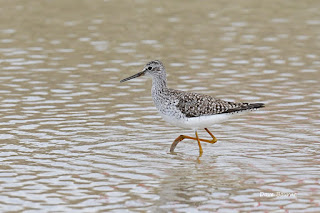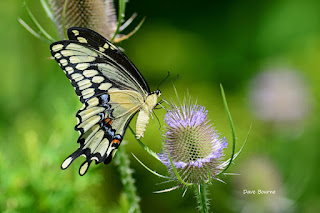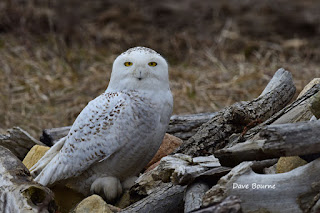The Winter Wren is a palette of browns with dark barring on the wings, tail, and belly.

Tuesday, August 30, 2022
Monday, August 29, 2022
Marsh Wren
The Marsh Wren clings to wetland vegetation, tail cocked and legs splayed, often with each foot wrapped around a different stalk. This rusty-brown wren has black-and-white streaks down its back and a white eyebrow.
It sings a rapid-fire gurgling, trilling, and buzzy song from the depths of the marsh where its secretive life unfolds. Under the cover of reeds, males build multiple nests and breed with more than one female.
Sunday, August 28, 2022
Sedge Wren
The Sedge Wren is a short-billed, russet-brown bird that lives in wet fields and shallow marshes.
Their reputation as shy, furtive birds reflects this dense habitat, where they spend much of their time out of sight, foraging for insects and spiders on or near the ground. The song is simple compared to many other wrens: a few dry chips followed by a trill.
Saturday, August 27, 2022
House Wren
The House Wren is a common backyard bird over nearly the entire Western Hemisphere. It breeds from Canada through the West Indies and Central America, southward to the southernmost point of South America.
House Wrens will gladly use nestboxes, or you may find their twig-filled nests in old cans, boots, or boxes lying around in your garage.
Sunday, August 21, 2022
Local Shorebirds
There has been some nice shorebird photo ops at a local make shift pond created at a housing development area here in Sarnia.
Friday, August 19, 2022
Thursday, August 18, 2022
Wednesday, August 17, 2022
Giant Swallowtail
The Giant Swallowtail is the largest butterfly in North America. It is quite often found in the meadowland area of Canatara. And we have had them in the garden this year.
Tuesday, August 16, 2022
Chinese Mantis
The Chinese Mantis is a species of mantis native to Asia and the nearby islands. In 1896 this species was accidentally introduced by a nurseryperson near Philadelphia.
The Chinese Mantis is a long, slender, brown and green praying mantis. It is typically longer than other mantis species reaching just over 11 cm (4.3 in), and is the largest mantis species in North America.
This image was taken in my yard and at first, I believed it to be a Praying Mantis but after a little research determined it to be an invasive Chinese Mantis.
Sunday, August 14, 2022
The spider, the grasshopper and the mantis
So, the story behind these images goes like this. First, I noticed the Black and yellow Argiope spider and the cool web. As I approached the web to grab a shot of the spider I flushed a grasshopper who inadvertently ended up in the spider’s web.It was fascinating to watch the spider in a matter of seconds completely encase the grasshopper.
The black-and-yellow Argiope spider is quite attractive and one of our more conspicuous species of orb weaving spiders. Orb web means it spins a web like a circle. Other commonly used names for this spider are golden orb-weaver, yellow garden orb-weaver and the writing spider. Master Gardeners
Mantises are an order of insects that contains over 2,400 species in about 460 genera in 33 families.
Friday, August 12, 2022
Polyphemus Moth
Interestingly Polyphemus Moth adults emerge from their cocoons in the late afternoon, and mating occurs the same day from late evening to early morning. Females lay eggs that evening, singly or in groups of 2 or 3 on leaves of the host plant. Newly-hatched caterpillars eat their eggshells, and caterpillars of all ages are solitary. Older caterpillars eat an entire leaf and then cut the leaf petiole at the base so it falls to the ground, perhaps a defensive measure to eliminate signs of feeding.
Thursday, August 11, 2022
Great Spangled Fritillary
The Great Spangled Fritillary butterfly prefers open, moist places including fields, valleys, pastures, meadows, open woodland and prairies.
Wednesday, August 10, 2022
Tuesday, August 9, 2022
Red Spotted Purple
The Red-Spotted Purple butterfly is normally seen in the Eastern United States, from the Gulf Coast to southern Canada.
It is not an abundant species, and is most often seen in woodlands and along streams and marsh land.
The size of the Red-Spotted Purple is typically in the 3.0" - 3.5" range and it normally produces 2-3 broods per year.
Monday, August 8, 2022
Black Swallowtail
Black Swallowtails are one of the most common garden butterflies in southern Ontario.
Black Swallowtails are black with rows of light yellow spots. It has one red-orange eyespot and several blue spots on each hind wing.
Sunday, August 7, 2022
Mourning Cloak
Mourning Cloak butterflies are most often found near deciduous forests. However, their habitat includes many developed areas like suburban yards, parks, and golf courses.
Saturday, August 6, 2022
Question Mark
Question Mark butterflies have a wingspan of 5 to 7 centimeters. Their coloring is deep orange with black spots and a lavender edge.
Friday, August 5, 2022
American Painted Lady
The American Painted Lady has an upperside with an uneven brown, yellow, and orange pattern. A forewing with a black apical patch, a small white spot in the orange field below the patch which you can see in this image if you look closely, and a white bar at the leading edge of the forewing.
They are found in open places with low vegetation including dunes, meadows, parks, vacant lots and forest edges.
They are a resident in the southern United States, Mexico, and Central America south to Colombia and migrate to and temporarily colonizes the northern United States, southern Canada, the West Indies, and Europe.
Thursday, August 4, 2022
Common Buckeye
Definitely one of my favourite butterflies to observe is the beautiful Common Buckeye, which I think is anything but common.
The Common Buckeye is a butterfly in the family Nymphalidae. It is found in the United States east of the Rocky Mountains, Mexico and southern Canada.
Wednesday, August 3, 2022
Cooper's Hawk
Cooper’s Hawks are a medium-sized hawk with the classic accipiter shape: broad, rounded wings and a very long tail. In Cooper’s Hawks, the head often appears large, the shoulders broad, and the tail rounded.
Adults are steely blue-gray above with warm reddish bars on the underparts and thick dark bands on the tail. Juveniles are brown above and crisply streaked with brown on the upper breast, giving them a somewhat hooded look compared with young Sharp-shinned Hawks' more diffuse streaking. Cornell All About Birds
Tuesday, August 2, 2022
Monday, August 1, 2022
Snowy Owl
The most Snowies I have observed in a short time span was the time we observed 26 around the Sarnia Airport vicinity.
Subscribe to:
Posts (Atom)








































